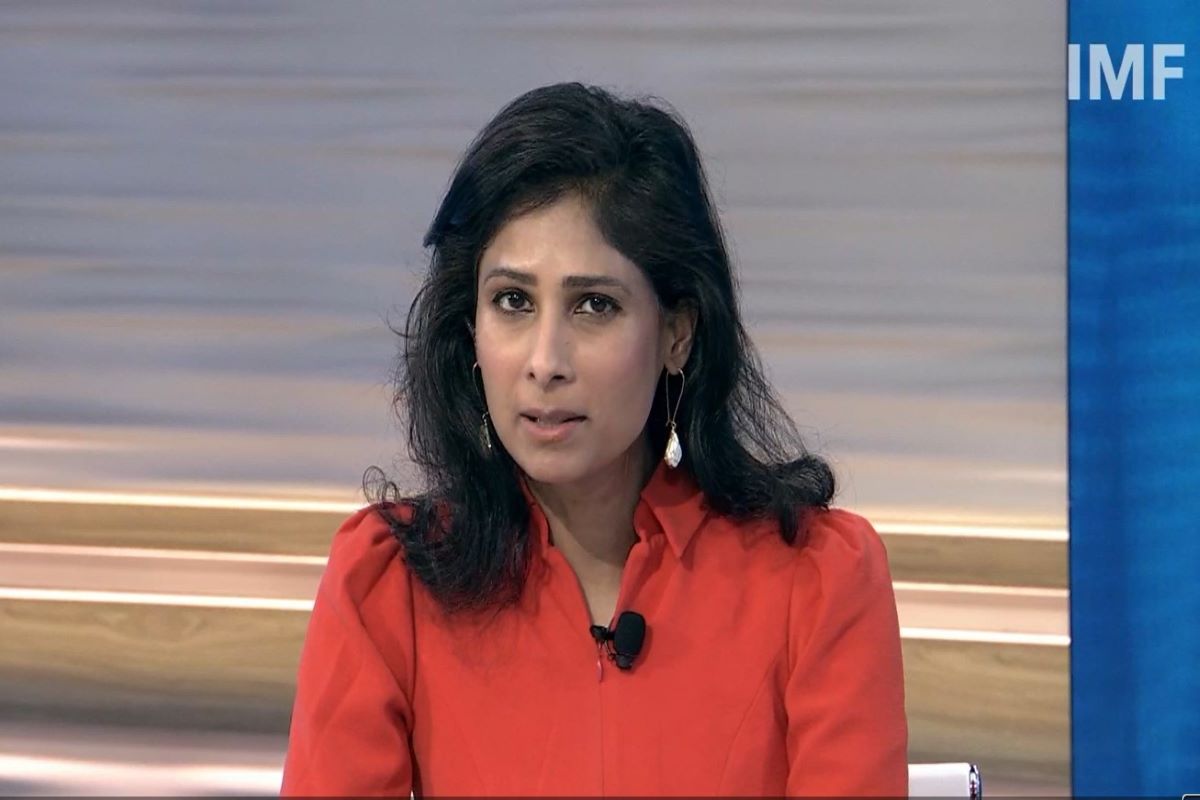UP govt to conduct grand roadshows in India and abroad for Maha Kumbh
Apart from this, approval has been granted for the purchase of 220 vehicles for the event.
The IMF’s World Economic Outlook (WEO) kept the gross domestic product (GDP) growth forecasts it had made in July for India, whose Covid-battered economy had shrunk by 7.3 per cent in the last fiscal year.

International Monetary Fund's Chief Economist Gita Gopinath (IANS photo)
India will continue to be the world’s fastest-growing major economy, clocking a growth rate of 9.5 per cent this fiscal year and 8.5 per cent in the next, according to the International Monetary Fund (IMF) projections released on Tuesday.
The IMF’s World Economic Outlook (WEO) kept the gross domestic product (GDP) growth forecasts it had made in July for India, whose Covid-battered economy had shrunk by 7.3 per cent in the last fiscal year.
In July, while India was in the grip of Covid-19’s second wave, the IMF had cut its forecast of 12.5 per cent made in April before the pandemic’s resurgence by 3 per cent.
Advertisement
The WEO’s long-term forecast for India’s GDP growth is 6.1 per cent in 2026.
In the WEO tables, China followed India with 8 per cent this year and 5.6 per cent the next – a reduction of 0.1 per cent for both years from the forecast made in July.
The UK came next with 6.8 per cent growth this year, followed by France at 6.5 per cent, and the US at six per cent.
The global economy is projected to grow 5.9 per cent in 2021 and 4.9 per cent in 2022 – a 0.1 percentage point lower for 2021 than in the July forecast.
The WEO said: “The downward revision for 2021 reflects a downgrade for advanced economies — in part due to supply disruptions — and for low-income developing countries, largely due to worsening pandemic dynamics.”
IMF’s Chief Economic Gita Gopinath said in her foreword to the WEO, “The global recovery continues but the momentum has weakened, hobbled by the pandemic.”
“Fuelled by the highly transmissible Delta variant, the recorded global Covid-19 death toll has risen close to 5 million and health risks abound, holding back a full return to normalcy. Pandemic outbreaks in critical links of global supply chains have resulted in longer-than-expected supply disruptions, further feeding inflation in many countries.”
“Overall, risks to economic prospects have increased, and policy trade-offs have become more complex,” she warned.
The projected a wary outlook: “Overall, the balance of risks for (global) growth is tilted to the downside. The major source of concern is that more aggressive SARS-CoV-2 (Covid-19) variants could emerge before widespread vaccination is reached.”
The WEO, which stressed the importance of vaccination, said:, “The development of Covid-19 vaccines was encouraged by unprecedented public support.”
As an example, it cited the help in scaling up manufacturing by the Indian government grants to vaccine producers.
The IMF forecast is more than a per cent higher than the World Bank’s estimate of 8.3 per cent for this fiscal year, which puts it behind China’s 8.5 per cent growth this year.
The Bank’s Regional Economic Update released last week said India’s GDP growth is expected to moderate to 7.5 per cent next year and 6.5 per cent in 2023-24.
The United Nations, which made its forecast for the calendar year, rather than the fiscal, said it expected India’s economy to grow by 7.5 per cent this calendar year and rebound to 10.5 per cent next year.
India’s consumer price index is expected to grow by 5.6 per cent this fiscal year and by 4.9 the next, according to the IMF’s WEO.
The Maldives, whose economy shrunk by 32 per cent last year, is expected to rebound to 18.9 per cent this year and moderate to13.2 per cent next year, the WEO said.
Elsewhere in South Asia, growth is expected to be slower. Pakistan’s GDP is forecast to grow by 3.9 per cent this year, and by 4 per cent the next, and Bangladesh by 4.6 per cent this year and 6.5 per cent the next year, according to the WEO.
Sri Lanka’s growth is forecast to grow 3.6 this year and moderate to 3.3 next year, while Nepal’s GDP is expected to grow by 1.8 per cent this year and then rebound to 4.4 per cent, the report said.
Bhutan’s economy is forecast to continue to shrink by 1.9 per cent this year, but grow by 4.2 per cent next year, according to the WEO.
Advertisement